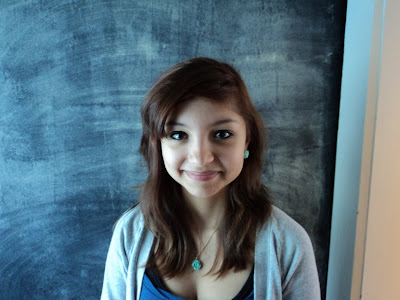Sherrie
McGraw was born in Oklahoma of Irish-Catholic-Cherokee descent. She is one of
seven children from a family obsessed with Golf. Her father, Gerv, owned a Pro
shop and many of her siblings are serious athletes or coaches. Sherrie is not a
golfer but has still managed to make excellent use of the discarded golf clubs
from her father’s shop.
When I first
moved into Sherrie and my father’s guesthouse, I thought I had hit the jackpot.
It was small, but beautiful—a sweet little adobe tucked into the mountains.
Right outside my door was Sherrie’s garden, overflowing with roses, broccoli,
raspberries, cucumber, tomatoes, and squash, all thriving in the merciless
desert earth. I innocently mentioned to Sherrie that she was going to need a
bigger garden soon. Silly me.
A few days
later, Sherrie was showing me how to use a motorized push-tiller. She made it
look easy, scooting around the side yard like lightning, deftly maneuvering
what I considered a fairly intimidating piece of farming equipment.
“How do I
know where to stop?” I asked nervously.
“Oh, I marked
off the boundaries with clubs,” she told me.
“Clubs?” I
cautiously ventured.
“Golf clubs.
I cut the bottoms off to make stakes for the garden,” she explained.
“I see.” I
started to move the tiller forward.
Two minutes
later, Sherrie and I were chasing the tiller, which had decided that it didn’t
like boundaries. To further clarify this, it ate two of the golf clubs, turning
them into mangled pieces of metal (tiller yard art?) before heading across the
road to test the boundaries of someone else’s land.
For the
record, I am five foot nine inches. Sherrie is tiny. She could fit in my
pocket. Against all logic, she has the strength of a bear. She retrieved the
tiller from the neighbor’s yard (while it was still trucking along at an
impressive clip) and finished my job. This time, the tiller stayed within its
boundaries. It knew better than to try to get away when Sherrie was in charge.
Outside of
the garden, there is another place where Sherrie thrives: her studio. Walking
into Sherrie’s studio is like being shot straight into the heart of an artist.
Vases and T’ang horses sit patiently in corners, waiting. Rolls of canvas line
the walls, climbing toward the ceiling. The smell of turpentine (one that has
become a part of my sensory database) envelops every corner of the room,
including the centerpiece: Sherrie’s easel, which stands alone, throne-like,
flanked by its guards—a palette and an empty coffee can filled with
paintbrushes.
The ever-present
Taos sunlight falls in muted blocks from the studio's high north windows, but, ironically, does not actually light up the space.
Sherrie does that. Despite her inclination to dress entirely in black, she
illuminates a room with her intensity, equal parts energy and focus. As a
result, watching her paint is a lesson in paradoxes. Her body is still, but her
eyes, revealingly expressive, are working, helping her mind process what
exactly is happening on the canvas, or, even more accurately, what needs to be
happening on the
canvas. Her mind is always in gear, ready for the next step.
When she is not painting, Sherrie is almost
always in motion. She is able to multi-task at almost everything. Almost. She
can cook a vegan meal for ten people while holding a focused conversation. She
can paint a delicate still-life of a light pink rose bent gently over its vase
while discussing the state of the world. She cannot, however, talk on the phone
while doing anything else. It’s one of my favorite quirks about her. I could,
quite easily, rob her blind when she is on the phone--walk out with her kitchen
table. Sherrie likes live conversation. The phone messes her up—it’s a live
person, but once removed. She is very real and very grounded and she likes everything
around her to be that way, too.
Through her
paintings, Sherrie teaches us that art is a process, just as nature is a
process. While Taos is a place of great calm and beauty, it is not for the weak
at heart. It takes a certain type of person to appreciate Taos, with its
laissez-faire lifestyle, quirky residents, lack of natural water sources, and physical
isolation. It takes someone like…Sherrie.
















 Tula loves these Emu boots so much. She has worn them to death.
Tula loves these Emu boots so much. She has worn them to death. 

















